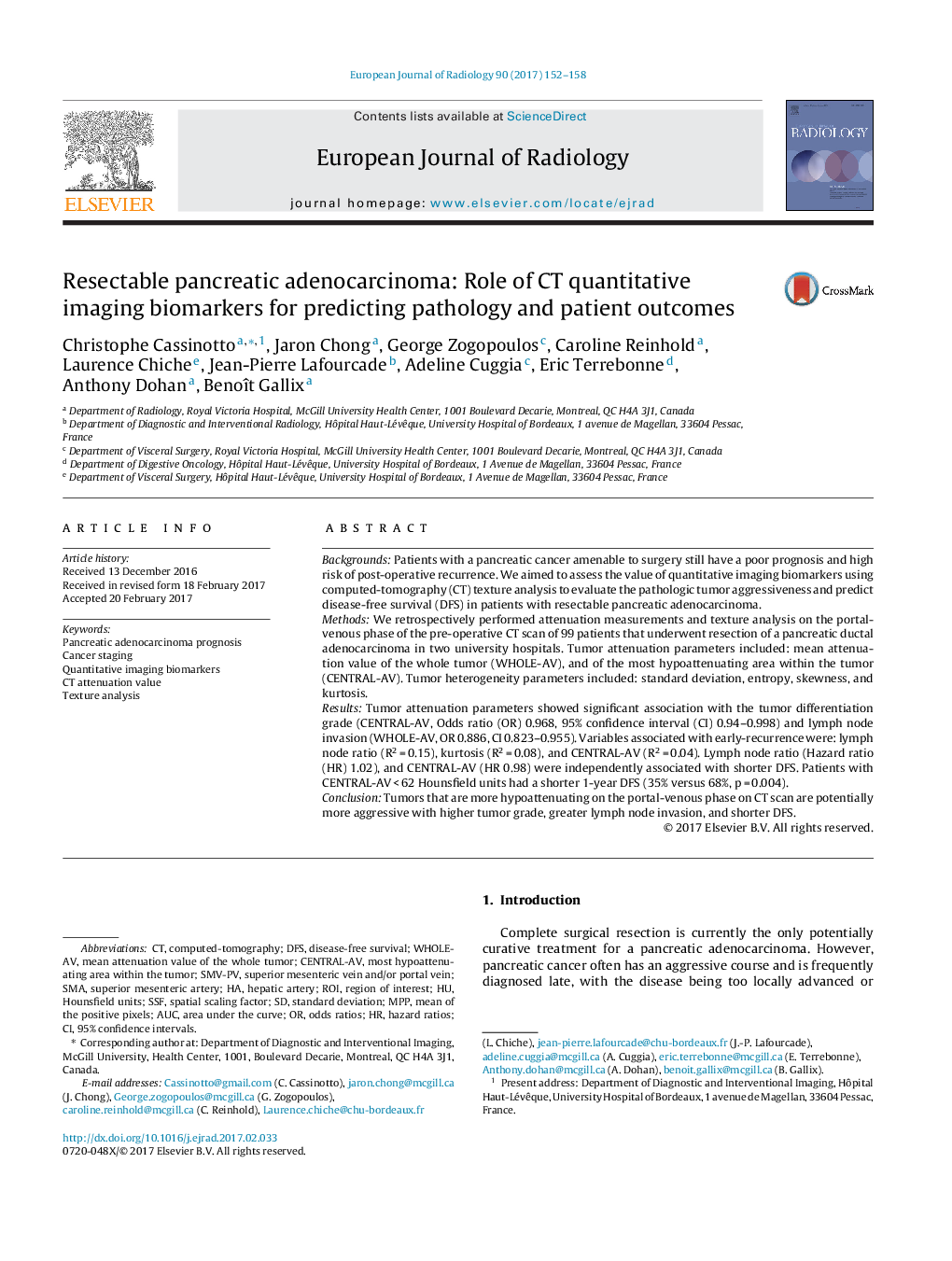| Article ID | Journal | Published Year | Pages | File Type |
|---|---|---|---|---|
| 5726324 | European Journal of Radiology | 2017 | 7 Pages |
â¢CT quantitative biomarkers can be helpful in the management of patients with pancreatic cancer.â¢Tumor attenuation measured at portal phase is associated with pathologic aggressiveness.â¢Texture and attenuation analysis can predict tumors associated with a worse prognosis.â¢CT quantitative imaging biomarkers can improve the management of patients.
BackgroundsPatients with a pancreatic cancer amenable to surgery still have a poor prognosis and high risk of post-operative recurrence. We aimed to assess the value of quantitative imaging biomarkers using computed-tomography (CT) texture analysis to evaluate the pathologic tumor aggressiveness and predict disease-free survival (DFS) in patients with resectable pancreatic adenocarcinoma.MethodsWe retrospectively performed attenuation measurements and texture analysis on the portal-venous phase of the pre-operative CT scan of 99 patients that underwent resection of a pancreatic ductal adenocarcinoma in two university hospitals. Tumor attenuation parameters included: mean attenuation value of the whole tumor (WHOLE-AV), and of the most hypoattenuating area within the tumor (CENTRAL-AV). Tumor heterogeneity parameters included: standard deviation, entropy, skewness, and kurtosis.ResultsTumor attenuation parameters showed significant association with the tumor differentiation grade (CENTRAL-AV, Odds ratio (OR) 0.968, 95% confidence interval (CI) 0.94-0.998) and lymph node invasion (WHOLE-AV, OR 0.886, CI 0.823-0.955). Variables associated with early-recurrence were: lymph node ratio (R2 = 0.15), kurtosis (R2 = 0.08), and CENTRAL-AV (R2 = 0.04). Lymph node ratio (Hazard ratio (HR) 1.02), and CENTRAL-AV (HR 0.98) were independently associated with shorter DFS. Patients with CENTRAL-AV < 62 Hounsfield units had a shorter 1-year DFS (35% versus 68%, p = 0.004).ConclusionTumors that are more hypoattenuating on the portal-venous phase on CT scan are potentially more aggressive with higher tumor grade, greater lymph node invasion, and shorter DFS.
